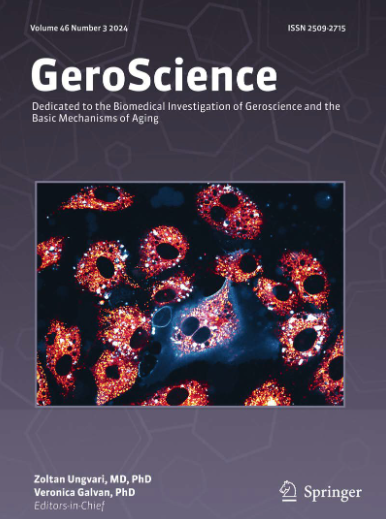在衰老过程中增强周围神经再生:雪旺细胞,c-Jun的作用,以及新兴的治疗策略。
IF 5.4
2区 医学
Q1 GERIATRICS & GERONTOLOGY
引用次数: 0
摘要
周围神经损伤(PNI)面临着重大挑战,特别是在老龄人群中,雪旺细胞功能障碍、c-Jun表达减少、衰老加剧和髓磷脂清除受损阻碍了再生。靶向治疗旨在恢复雪旺细胞的可塑性,改善神经修复。其中包括上调c-Jun的基因治疗、消除衰老雪旺细胞的抗衰老药物、JNK的药理激活、铁凋亡抑制和基于干细胞的移植。生物材料的进步,如神经引导导管、细胞外基质水凝胶和3d打印支架,提供了结构和生化支持。尽管取得了这些进展,但由于患者的异质性、个性化方法的需要以及监管方面的考虑,临床翻译仍然具有挑战性。整合多模式策略有望优化衰老个体的周围神经修复。未来的研究必须完善这些治疗方法,以开发临床可行的解决方案,提高PNI患者的功能恢复和生活质量。本文章由计算机程序翻译,如有差异,请以英文原文为准。
Enhancing peripheral nerve regeneration in aging: the role of Schwann cells, c-Jun, and emerging therapeutic strategies.
Peripheral nerve injuries (PNI) present a significant challenge, particularly in aging populations where Schwann cell dysfunction, reduced c-Jun expression, increased senescence, and impaired myelin clearance hinder regeneration. Targeted therapies aim to restore Schwann cell plasticity and improve nerve repair. These include gene therapy to upregulate c-Jun, senolytic agents to eliminate senescent Schwann cells, pharmacological activation of JNK, ferroptosis inhibition, and stem cell-based transplantation. Biomaterial advancements, such as nerve guidance conduits, extracellular matrix hydrogels, and 3D-printed scaffolds, provide structural and biochemical support. Despite these advances, clinical translation remains challenging due to patient heterogeneity, the need for personalized approaches, and regulatory considerations. Integrating multimodal strategies holds promise for optimizing peripheral nerve repair in aging individuals. Future research must refine these therapies to develop clinically viable solutions that enhance functional recovery and improve quality of life for patients with PNI.
求助全文
通过发布文献求助,成功后即可免费获取论文全文。
去求助
来源期刊

GeroScience
Medicine-Complementary and Alternative Medicine
CiteScore
10.50
自引率
5.40%
发文量
182
期刊介绍:
GeroScience is a bi-monthly, international, peer-reviewed journal that publishes articles related to research in the biology of aging and research on biomedical applications that impact aging. The scope of articles to be considered include evolutionary biology, biophysics, genetics, genomics, proteomics, molecular biology, cell biology, biochemistry, endocrinology, immunology, physiology, pharmacology, neuroscience, and psychology.
 求助内容:
求助内容: 应助结果提醒方式:
应助结果提醒方式:


